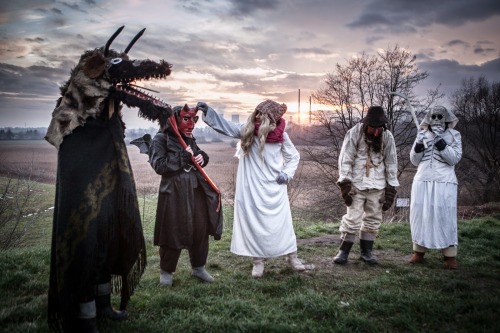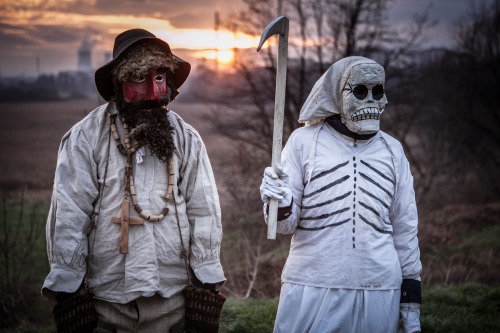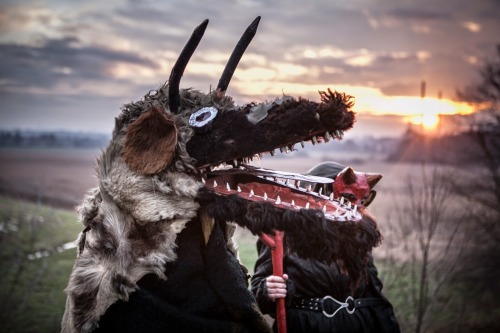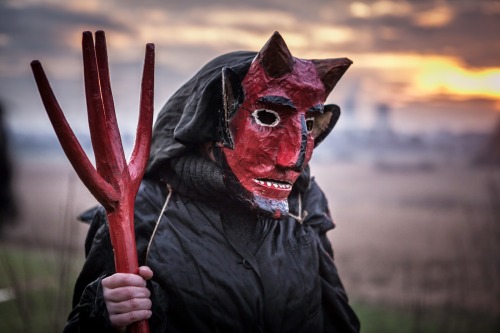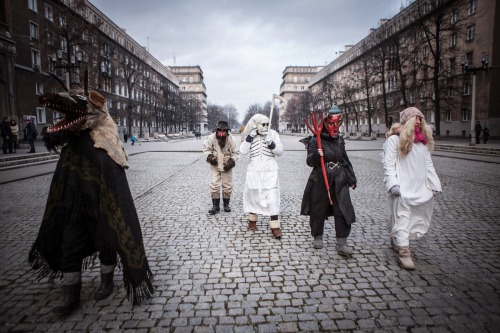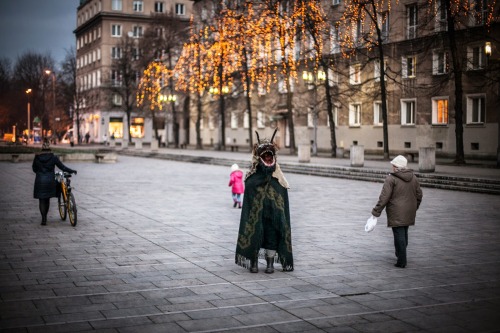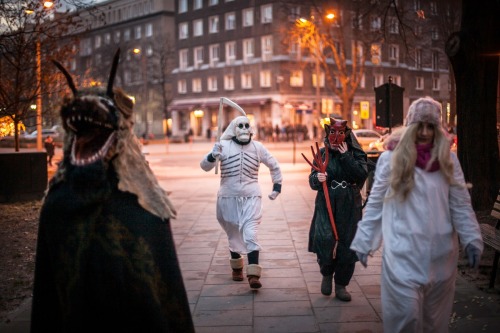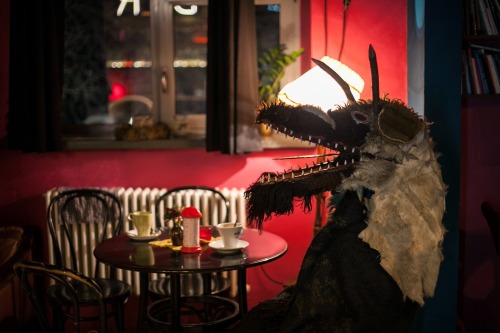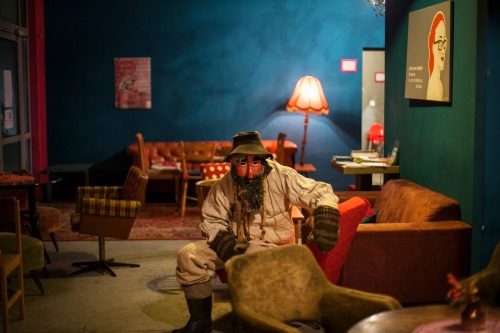lamus-dworski:Kolędnicy in present-day Poland. Images © stylowanowahuta.blogspot.comThe custom of ko
lamus-dworski:Kolędnicy in present-day Poland. Images © stylowanowahuta.blogspot.comThe custom of kolędowanie (koliada / koleda, also known in English as the ‘Slavic caroling’) is a remnant of ancient pagan rites celebrating the days growing longer after the winter solstice. Polish name ‘kolęda’ itself is associated with Christmas carols nowadays, but originally meant a ‘joyful New Year’s song’. During these rituals groups of friends dress up in various symbolic costumes - for example the Death, Devil, Angel, Turoń and Dziad (old man symbolizing wandering souls) seen on the photos - and stroll from house to house to sing traditional carols in exchange for sweets, drinks or small money. The loud songs - in the past accompanied by a variety of bells, reels, drums, etc. - were meant to prevent the Nature from loosing herself in the state of the winter hibernation and prepare her for the later rites of chasing the winter away before the arrival of spring. By tradition the groups of kolędnicy could be observed from the days of Christmas (originally from the day after the winter solstice) throughout the carnival season (zapusty) up until the day before the Ash Wednesday (moveable feast that falls most often at the beginning of February). Kolędnicy (also kolędniki in the everyday speech) is a general term for the groups, but they appear under numerous local terms in various regions of Poland. In some regions the custom of visiting houses takes rather a form of colorful parades going along the main routes of the towns or villages. -- source link
Tumblr Blog : lamus-dworski.tumblr.com
#kolędnicy#poland#polish tradition
